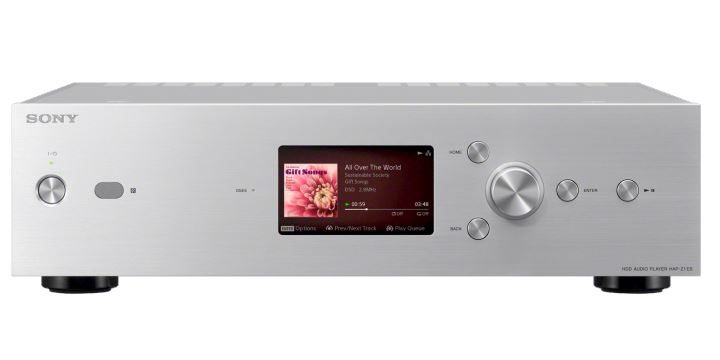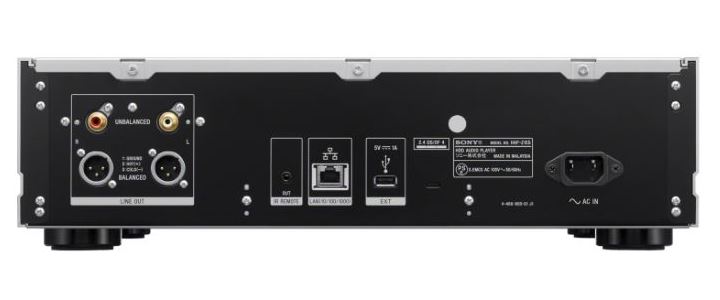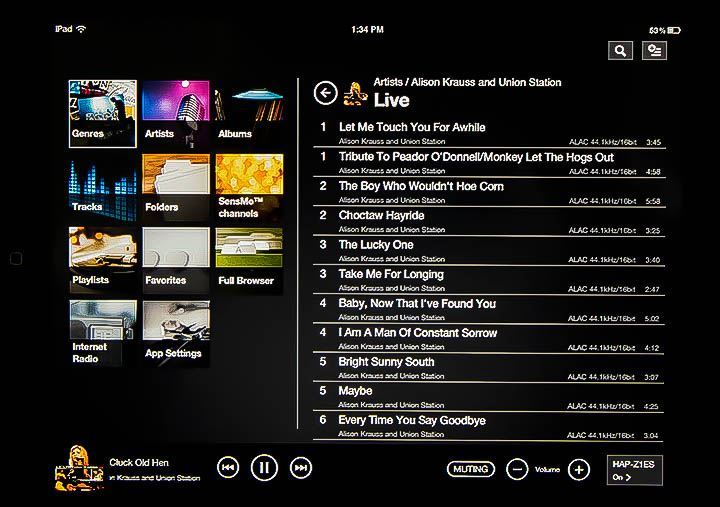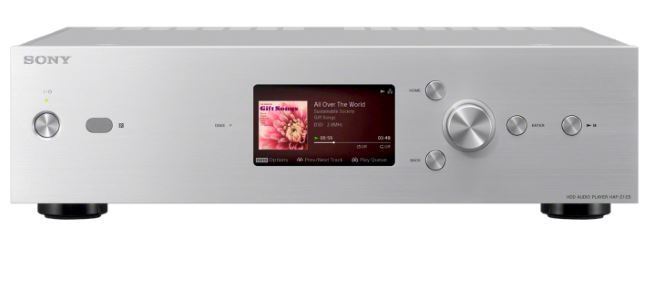
I began my journey into computer audio in 2004 with the introduction of the Windows version of iTunes and the Apple lossless codec. I first began ripping my collection of more than 1500 CDs with my rock, pop and jazz selections, and it was a joy. iTunes retrieved the metadata from Gracenote with ease and accuracy. I thought to myself that it was going to be a piece of cake. Then I began to rip my classical collection and the real work began. The Gracenote database for classical music was (and is) a complete mess, requiring that the metadata for each track be painstakingly edited for accuracy and consistency. For example, sometimes the composer or conductor is listed as the artist. The album artist varies among the conductor, the orchestra, and the soloists. In addition, the composer names are all over the board - JS Bach, J.S. Bach, Johann Sebastian Bach, Bach, JS, etc. - and the spellings inconsistent - Rachmaninov, Rachmaninoff, Prokoviev, Prokofieff, etc. The descriptions of the movements of works are even worse, with inconsistent descriptions and abbreviations. Multi-disc operas are a disaster. Artwork is hit or miss. And then sometimes, the metadata is just plain wrong. It is what you would expect from a database derived from data contributed by well intentioned, but uninformed users. In short, it took me months and months of focused effort to rip my collection and groom my database. And I am not even OCD. Now adding a disc in iTunes with correct metadata and artwork is second nature, though I still find and fix little glitches. Which is to say, I have a huge amount of time invested in iTunes.
Other playback software has come and gone - foobar2000, Media Monkey, Decibel, etc. The current favorite is JRiver Media v19, which seems to be a good alternative if you are just starting out, you can get along with its user interface, and you can wrap your head around its complexity. Thus, while alternatives to iTunes have each had their good points, none offered anything attractive enough for me to consider switching. So I have stuck with iTunes coupled with a sample rate changer and DSD playback engine. I have tried them all and have settled on Audirvana Plus. A few years ago I abandoned Windows (sigh of relief) for music playback, and now have a dedicated Mac Mini with 16GB of RAM and a 1TB internal hard drive, and, perhaps most importantly, a 27″ Thunderbolt display. The extra screen real estate is key to quickly and easily finding what I want with all the information about the recording readily at hand. The only downside is that the iTunes remote leaves a lot to be desired, especially when compared to something like JRemote, though it is not really an issue for me.
However, I understand that some audiophiles are not computer savvy or just do not want to have a computer in their listening room. For them, the now burgeoning market for music servers is where the action is. The first, and for a long time only, entrant in the field was Meridian Sooloos. It has a sophisticated interface, but with no track level metadata, it is a non-starter for audiophiles with large classical collections. In addition, until recently, it only shipped with a 500GB hard drive, and Meridian’s proprietary external storage was very expensive. (It now ships with a 1TB hard drive and can be connected to a QNap NAS.) Then there was Olive. The less said about it the better. Then there were (and still are) the expensive generic Windows PCs in fancy boxes with quixotic names but decidedly average software, soundcards, USB interfaces, and power supplies. Fortunately, there is now an ever increasing selection of high quality Linux based dedicated music servers with top flight hardware and well thought-out control software, and, except for a few at the upper end of the scale, the price is coming down daily.
Description
Enter the Sony HAP-Z1ES. At $1999, it is one of the least expensive, yet versatile and attractive, alternatives. It is, in essence, a giant iPod, or more accurately, an Astell&Kern AK240 with enormous capacity. Measuring approximately 17″ wide by 14.25″ deep by 4.25″ high and weighing in at a surprisingly hefty 32 pounds, the external chassis is of the bent metal variety with a brushed aluminum faceplate. The interior of the chassis, however, is built using the same heavy-duty “Frame Beam Chassis” construction methods as Sony’s other ES grade components, which means, unlike a lot of components from other manufacturers in this price range, the unit is not going to flex in your hands when you go to install it on your rack, and once sited, will minimize any operational vibrations. The front panel is on the spartan side, with a power button, IR receiver window, DSEE indicator (more about that in a minute) on the left, a large, high resolution color display in the center, and a knob, three navigation buttons, and a Pause/Play button on the right. Around back, there are a two-prong IEC power inlet, USB connector for an external hard drive, network jack, IR connector, and balanced and unbalanced analog outputs. There are no digital inputs for external sources so the Z1ES cannot act as a stand-alone DAC, and no digital outputs for connection to an external DAC. The Z1ES was intended to be (and is) a self-contained, plug’n'play music server, and, as we will see, accomplishes that task handily.

While the Z1ES may appear basic from the outside, inside it is brimming with complex componentry and sophisticated performance features. The unit contains a 1TB hard drive and will play darn near any digital format - MP3, WMA, ACC, ALAC, AIFF, FLAC, WAV, DSD, and DSF - without any user intervention. Similar to the technology in the dCS, EMM Labs, PS Audio, and Playback Designs DACs, the Z1ES optionally upconverts any digital input to double DSD, regardless of original sample rate or bit depth. The bitstream is then converted to analog, and the high frequency noise endemic to DSD removed using a four level analog FIR (finite impulse response) filter. All of this is accomplished using high-performance DSP and FPGA (field programmable gate array) programming derived from Sony’s Extended Super Bit Mapping (SBM) technology developed for its professional products. Sony refers to this as its DSD Remastering Engine. This option can be selected in the iOS/Android app for quick back and forth comparison. In addition, the Z1ES can optionally (attempt to) restore high frequency content removed from lossy files during compression with its Digital Sound Enhancement Engine (DSEE) algorithms. Two transformers independently powering the digital and analog sections, and a liquid crystal oscillator with extremely low phase noise, are employed to minimize noise and jitter. And for those times when you want to let someone else be the DJ, the Z1ES gives you access to hundreds of internet radio stations. Given its construction and capabilities, I’d wager that Sony is offering the Z1ES as a loss-leader in furtherance of its mission to promote High Resolution Audio (HRA).

Setup
The Z1ES is a breeze to set up, even without a user manual. You plug the power cord into the wall socket and the analog outputs into your preamplifier or integrated amplifier, press the power button and you are ready to go. Since the Z1ES has wi-fi capability, you do not need to plug it into your network. The screen is easy to navigate. Turn the knob and press the enter button to make selections. The first thing you will want to do is connect to your network. Turn the knob and select Settings > Network Settings > Internet Settings > Wireless Setup > Select Access Point. You then select your wireless network and enter your wi-fi password by scrolling around an on-screen keyboard. Bingo, you are now connected. You follow the same procedure for a wired connection.
Although there are a dozen sample selections, you will next want to transfer your existing library of music over to the Z1ES. Unfortunately, unless you are a Linux user and your music files are on an external USB drive formatted with ext4, you cannot just connect it to the USB port on the back of the Z1ES. That means Windows and Mac formatted hard drives are a no-go. You will have to rely on your network to handle the transfer. First, download the small HAP Music Transfer software program from Sony’s support web page. The program is intuitive to use. You just navigate to the file folder(s) on the network drive(s) containing your music files and select transfer.

If you have a lot of files, I strongly suggest using a wired connection, or else it will take an excruciatingly long time to complete. As it was, it took me 38 hours to transfer 570GB of music (approximately 18,000 tracks), including 90GB of DSD recordings, over a wired connection from a old USB hard disk backup attached to my desktop system using a 100Mbps network. It would have gone much faster if my music files had be on a internal hard drive and I had had an extra gigabit network switch on hand. Thankfully, all of my carefully created metadata and art work was preserved. Once done, you are ready to select and listen to music. If all of that sounds complicated, rest assured that it is harder to describe than to accomplish. It just takes time. The neat thing is that the next time you rip a CD into a folder(s) you have set the HAP Music Transfer program to watch, it will, like magic, automatically transfer the music files to the Z1ES and update the database for you. And, since both the internal and external drives of the Z1ES are visible on your network, backup is a matter of dragging and dropping the folder(s) containing your music to your backup drive. Of course, automatic backup software would be a better choice.
Next download the Sony HDD Audio Remote app to your iPad or Android tablet. It too is intuitive. You just navigate around your music by genre, artist, album, track, or folder, or use the search feature, make your selection and press the play icon. The Z1ES will automatically play the file regardless of its format. To view additional metadata, or to edit it, simply press and hold the selected track, and you will be taken to the extended information screen. That is all there is to it. And tagging favorites and setting up playlist is easy. In a few minutes, you will find it very facile to navigate around.

Listening
Prior to receiving the Z1ES, I owned no lossy compressed music files. Didn’t see a need for them. I have no desire to compromise sound quality when I am in my listening room. I do own an iTouch, iPad, and iPhone, but except for plane travel, when I listen to lossless files on my laptop, I don’t listen to music while I am on the go. For me, a Pono player is of little interest. However, I did need to fully test out the Z1ES, so I downloaded some MP3, ACC, and WMA files. Guess what? Just as advertised, the Z1ES plays them automatically. I expected no less, but its nice to be able to confirm it. Switching back and forth, Sony’s Digital Sound Enhancement Engine (DSEE) does tip up the high frequency balance a bit, and, on the whole, I think it makes a worthwhile improvement. However, as they say, you can’t make a silk purse out of a sow’s ear. (There’s got to be a more modern aphorism.) That behind us, I can also confirm that it recognizes and plays back all manner of PCM files (AIFF, ALAC, FLAC, WAV) up to 192/24. And it doesn’t require any add-on software to accomplish the sample rate change. The real advancement with the Z1ES, however, is that it will bitstream both DSD64 and DSD128 files seamlessly. Unlike Pure Music, which had to obtain a patent to integrate DSD files into iTunes, or Audirvana Plus, which requires you play DSD files in playlist mode, or Amarra 3.0, which downsamples DSD files to 176.4/24, the Z1ES just manages and plays them natively like any other file. In other words, if you can get an audio file over to the Z1ES, your job is done. This is a major step forward in user friendliness. Kudos to Sony.
Knowing that the Z1ES can play any file you throw at it, how does it sound? To cut to the chase, excellent. Though at six times the cost, I would give the edge to my dCS Debussy, the differences were subtle (though meaningful), with the Sony holding its own against every other DAC I have reviewed (save, not surprisingly, the dCS Vivaldi). The idea that you can put together a dedicated computer and DAC combination at anywhere near the price of the Sony and get better results is misguided. Since, like most audiophiles who aren’t of the analog persuasion, the bulk of my music collection is Redbook CD, the performance of a DAC at 44.1/16 is critical. I put on Tony Rice’s Tony Rice Sings and Plays Bluegrass, because it is a recording of unamplified acoustic music, featuring guitar, banjo, dobro, mandolin, and stand-up bass. Recorded at a second tier studio in 1993, it does suffer from being a little bright. But one man’s bright is another man’s detailed. The important thing to note is the brightness is portrayed honestly, without emphasis, so that the sound, which on a lesser DAC, might become grating over the course of the album, remains eminently listenable. In particular, transients were lightning fast, and soundstaging precise without being spotlighted. And as good as PCM sounds natively, when subjected to Sony’s DSD Remastering Engine, it takes on a smoother presentation without losing high frequency clarity or extension. I was so impressed with its performance, I left it engaged all the time. I suggest you do the same. Vocals were likewise expressively portrayed without undue emphasis on sibilants. For example, on Gillian Welch’s The Harvest and the Harrow, which is faultlessly recorded, her mezzo voice is full-bodied, yet delicate, and blends beautifully with the harmonies added by Dave Rawlings. Another acoustic recording which proved enlightening was The Goat Rodeo Sessions featuring Yo-Yo Ma (cello), Edgar Meyer (double bass), Stuart Duncan (fiddle, mandolin) and Chris Thile (guitar). These are complex, dense string arrangements, yet following the musical line of each instrument posed no difficultly. And string tone was exemplary. Native DSD files, such as Diana Krall’s Love Scenes and Jennifer Warnes’ The Well, are frankly captivating. While I can’t say that listening to the music on the Z1ES proved revelatory in the same way as with the dCS Vivaldi, it was hard to find fault with any aspect of its presentation. Which is not to say it was flat or bland; to the contrary I found all sorts of music terrifically engaging.
Caveats
Notwithstanding its fine performance, there are a few downsides to the Z1ES. First, it lacks an analog or digital volume control, which means it cannot be used to drive power amplifiers or active speakers directly. Even in a one source, all digital setup, you need to have a preamplifier in the chain or use an integrated amplifier. And unless it is a Sony, like the new Sony TA-A1ES companion to the Z1ES (which also includes a critically needed headphone output), you are going to need to use a stick-on IR emitter, or Sony’s separate wand-like learning remote. Second, unless you are a computer geek, the hard drive is not user upgradeable. That may not be a problem, as 1TB will hold in the neighborhood of 2500-3000 losslessly compressed albums or 25,000-40,000 losslessly compressed tracks, and there is a USB port on the back for additional storage. The hitch is that the Z1ES has limited processing power, and Sony only guarantees responsiveness and performance up to 20,000 tracks. While it will handle more tracks, the system will become increasingly sluggish. Still, that’s a lot of music. Third, there is no digital output, so you cannot upgrade to an external DAC. That also may not be a problem as the Z1ES handles PCM up to 192/24 and up to double DSD. But for someone who has downloaded a few 352.8/24 files from 2L or knows someone who knows someone and has scored a couple of otherwise unavailable quad DSD files, it may be an issue. Fourth, metadata is somewhat limited. If you are used to annotating your music with comprehensive metadata, you may feel constrained. Fifth, you still need to rip your new discs or download your new tracks on a computer, and transfer them to the Z1ES, so you are going to need to have at least a laptop with optical drive in the listening room. Finally, it does not come in a CNC-milled, aircraft grade aluminum billet enclosure, and only costs $1999, so some audiophiles will reject it out of hand. For everyone else, it may be just the ticket.
Conclusion
The Sony HAP-Z1ES music server is an attractive, well thought-out, versatile, high performance alternative to a computer for playback of digital audio files. Its sound quality leaves little to be desired, and it is more than competitive with similarly priced stand-alone DACs, with music server functionality as a bonus. If you can live with the constraints identified above, and let’s face it, general music lovers to whom this product is aimed, as well as audiophiles not suffering from a hoarding disorder, won’t be much bothered by them, the Z1ES is a great way to get started with high resolution digital music playback. In fact, it may well be all the music server you will ever need.
- Frank Berryman
Specifications
• Supplied accessories : Remote Control; Instruction Manual; Quick Start Guide; LAN Cable; Audio Cord
• Playback Codec : DSDIFF (DSD); DSF; MP3; WAV (LPCM); WMA; AAC; FLAC; ALAC; ATRAC (NON DRM); AIFF (LPCM)
• Line Out : Yes (1)
• Balance Out : Yes (1)
• Other : Wi-Fi (802.11 b/g/n); USB (1 type A rear) for optional external HDD; Ethernet (1000BASE-T); IR Out
• Pin Jack Color : Gold
• Power Requirements : 120V 60Hz
• Power Consumption : 35W
• Auto Standby : Yes
• Power on Resume : Yes
• Sleep Timer : Yes
• GUI Language : Japanese, English, French, German, Spanish
• Power Consumption (Stand By) : 0.3W
• Dynamic Range : More than 105dB
• DSEE LED : Yes
• Frequency Characteristics : 2Hz-80kHz(-3dB)
• Detachable AC : Yes
• IR Learning : Yes
• Total Harmonic Distortion : less than 0.0015%
• Volume Normalization On/Off : Auto/ Off
• LCD Off Mode : Yes
• LCD : Yes (4.3 in)
• Internal HDD : Yes (1TB)
• Gracenote : Yes
• Gapless Playback : Yes
• External HDD : Yes (Rear USB) (optional)
• Metadata Generation / Acquisition : Yes
• Pre-install Contents : Yes
• PC Sync (Music/Video/Photo) : Music
• Access Control : Yes
• Network Standby : Yes
• Network Update : Yes
• Internet Music Service : vTuner
Contact
Sony Electronics Inc.
16530 Via Esprillo
San Diego, CA 92127
Telephone: (858) 942-4019
www.sony.com
Associated Equipment
Analog Source: VPI Scout; Dynavector 20X2; Musical Surroundings Phonomena II
Digital Sources: Meridian G08; Mac Mini; dCS Debussy; Audirvana Plus
Preamplifier: Meridian G02
Power Amplifier: Pass Labs XA100.5s
Loudspeakers: Magnepan 1.7; Magico S1
Analog Cables: Kimber Select KS1016 and KS1116
Digital Cables: Kimber Select KS2020 and KS2416 USB
Speaker Cables: Kimber Select KS6063 and KS9033
Power Cables: Kimber PK10G and PK14G
Accessories: Audience aR2p power conditioner



